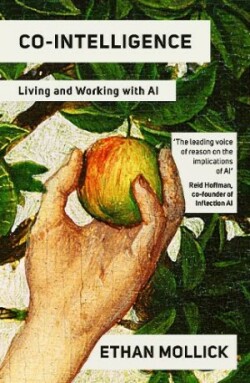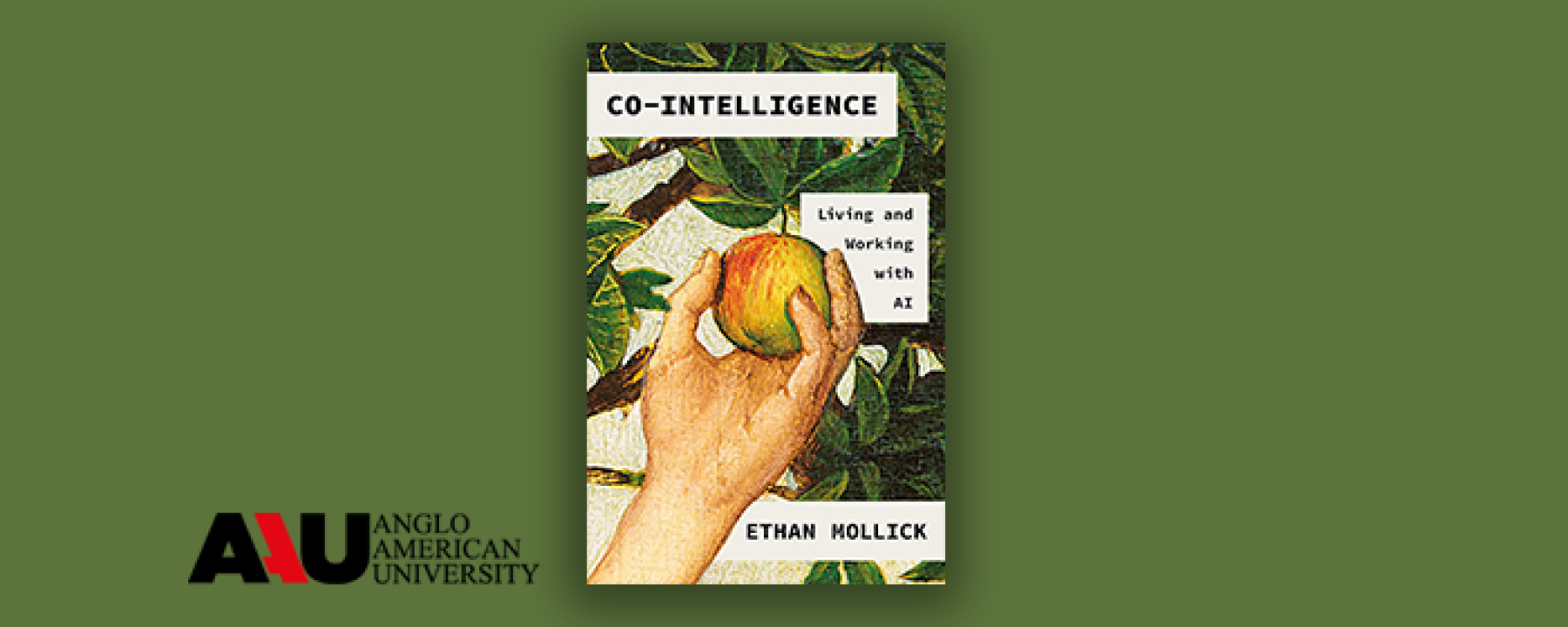What AI means for our careers?
The death of mastery and expertise?
Co-Intelligence: Living and Working with AI
Co-Intelligence: Living and Working with AI
I found this book both valuable and enjoyable. However, after reading Co-Intelligence: Living and Working with AI, you will NOT be able to use AI (Artificial Intelligence) like a pro in order to save your job or become the AI guru that everyone in your company and industry is looking for. Honestly, I had hoped it would be like that. Nevertheless, now I can more confidently participate in intelligent and complex conversations about what AI means in my career and the careers of my university students.
For that, and a few other crucial reasons, this is a book worth reading for someone who has not started engaging with this new ‘co-intelligence’ in a truly systematic manner. The ability to do just that is becoming more and more pressing. The irony is that many of us feel pressure to do a thousand things a day, to be more productive, be continuously learning in order to advance our careers; so much so that we don't feel we have time to sit down and read a book- even if that book helps us understand how to do all those things!
The book itself is divided into three main sections. In the first part, while stressing the idea of AI as a partner rather than just a tool, Mollick gives a wonderful and clear definition of Large Language Models (LLM’s) like ChatGPT and explains in accessible language how these LLMs work.
Is AI a Typical American?
Mollick says AI relies on patterns rather than a storehouse of data to create answers. For example, when asked to complete this sentence: ‘To be or not to (BLANK)’, an LLM will reliably predict the next word correctly. When asked to complete a non-standard sentence, however, its answers are rather random because it has no precedent on which to base its response. In many ways it is much more like a human than a computer program. It is not great at machine tasks like performing complex calculations without assistance or repeating a process consistently.
AI also lies, hallucinates answers and makes mistakes. Mollick says the danger of using LLMs to perform high level tasks is that they ‘want’ you to be happy as much as they ‘want’ to be accurate. This made me think about my countrymen. The National Council on Strength and Fitness reports that ‘Americans demonstrate an ongoing overconfidence in their knowledge and abilities… while performing in a subpar manner compared to the rest of the world, yet surveys indicate the U.S. population rates themselves as outstanding.’ Similarly, LLM’s are not optimized to say ‘i dont know’ rather they will give an inferred answer with extreme confidence.
In fact, when I first sat down to write, I prompted ChatGPT to give me a 1500-word overview of this book in the style of Monty Python. I included the author but forgot to include the sub-heading of the book. What did I get? A 1500 word summary of a book about co intelligence among societies that does not exist- a very convincing essay length lie! Here is brief excerpt:
‘Co-intelligence, you see, is all about how groups of people, through the power of collaboration, become smarter together than any one of them would be alone. Mollick explores how, throughout history, people have banded together to tackle challenges, whether it be building pyramids, exploring space, or deciding who should bring what to the annual office holiday party. And he does this with examples, research, and evidence so solid, it could withstand a siege from the Knights of Ni.’
This is funny, yes, but Mollick also reminds us that whatever AI you are using now is likely to be the worst AI you will ever use.
Be the Human in the Loop
Part Two focuses on the practical aspects of working with AI, offering strategies for effective integration. Mollick is coming at this from the point of view of an expert of many years. I don’t fault him for that, but for an AI neophyte like myself, this was the least helpful section. Furthermore, just about anyone in any profession could be reading this book, so it is nearly impossible to be specific enough about a job to be helpful in a practical sense. That said, these broad strokes could be preparing the reader for finer strokes in the future.
Mollick’s first principle of working with AI is to always invite it to the table. In fact, he suggests one should treat it like a person, but with an understanding that LLM’s are NOT people or sentient beings. Therefore, we can enhance our own use of AI through better prompt creation by, for example, giving it a specific persona or point of view.
Furthermore, with the correct prompts, one can brainstorm a huge number of ideas and concepts in a matter of seconds. They will not be particularly good options most likely, but a subsequent prompt can clarify, narrow down, specify, or omit what one doesn't like about the choices in the first list. It reminds me of Alex Osborn’s design thinking group ideation technique- but on steroids. However, this is also concerning, since due to the learning methods of AI, we can't tell exactly where its ideas come from. This opens the door to all manner of copyright or patent infringement.
Still, Mollick contends that AI’s brainstorming abilities can be a great boon for those who work in creative jobs who just need to get past the despair of the blank page. And this is true for nearly all professions – managers will use it to start emails, reports, even performance reviews; scientists for grants, teachers for feedback, students for assignments.
But we are reminded that there are dangerous implications here too. When we use AI for our first draft, we don't need to use deep reasoning or complex thinking. This phenomenon is covered in a nice discussion about mastery and expertise in Part Three. Additionally, humans tend to anchor their thoughts to their first draft. Now we are losing our ability to formulate complex thoughts AND we are building on a foundation not of our own design, but that of an LLM, which has already been shown to be of dubious quality.
However, Mollick points out an unexpected bright spot. For a while the news has predicted nothing but doom and gloom for those educated in the Humanities, yet AI is trained on much of humanity’s cultural history and heritage. Happily, these graduates are exactly the people best qualified to work with it as prompt engineers.

Co-Intelligence
Mollick, EthanThe Death of Mastery?
Part Three addresses the broader societal and ethical considerations of living in a co-intelligent world. While I am less interested in speculation than explanation, I do believe that discussing these possibilities is a useful thought experiment.
The following quote from the CEO of Turnitin is so brazen that I feel it warrants a place in this review. ‘We have a few hundred engineers and in 18 months we will need 20 percent of them… [and] we can start hiring them straight out of high school with no need for a 4 year college degree.’ he goes on to say the same goes for sales and marketing functions. The remedy for employees, according to Mollick, is focusing on a narrow area of expertise and becoming the human in the loop. Yet once again this solution is too general to be of much practical use to the reader, as is most of the speculation in this final part.
Humans have throughout history gained experience from starting at the bottom and LEARNING their way up. This is how expertise is won. As AI takes over mundane ‘starter’ tasks, we are in danger of losing the pipeline that creates masters and experts in their fields. This is both scary and oddly comforting when we realize that AI is not able to replace experts but will be very good at helping people become experts.
In the End, It Depends…
This book has not directly shown me how to find success in this new world of AI. It has opened my mind to the avenues I can explore in order to do so, however. After reading this book, you may be less fearful of using this new technology, but more fearful of the future of work in general, less confident in humanity’s chances, yet more confident about your own abilities to adapt. What should we make of it all? Mollick likes to point out that we are already cyborgs in effect, with our reliance on computers, mobile phones, the internet and all the other trappings of these past few decades. AI is simply another tool in the shed, albeit by far the most powerful one we have ever had.




















